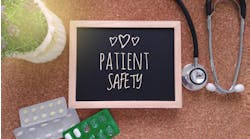U.S. hospital and health system leaders now see improving patient outcomes is a higher priority than reducing costs, according to the second annual survey of health system executives and clinicians released Sep. 16 by the Somerfield, N.J.-based Johnson & Johnson Medical Devices Companies.
A press release published on Sep. 16 found that, “While reducing costs is still a critical focus for health system leaders, patient outcomes has emerged as the top priority, with enhancing the patient experience and improving staff satisfaction also top of mind.
“Nearly six-in-ten (57 percent) of health system leaders (both executives and clinicians) ranked improving patient outcomes as a key area of focus in 2019, up from 48 percent in 2018. Reducing costs is still a top concern; however, it has decreased in importance for health system leaders from 2018 to 2019. Seventy-five percent of health system leaders selected reducing costs as a top priority in 2018, and in 2019 that number decreased to 55 percent,” the press release noted.
“It’s clear from the survey that health system leaders are looking beyond costs to overcome challenges and improve the outcomes for their health systems,” said Melinda Thiel, Vice President, Health System Value Transformation, Johnson & Johnson Medical Devices Companies, in a statement contained in the press release. “We are seeing a trend among health systems toward more holistic solutions that can truly impact the patient experience, strengthen the wellbeing of healthcare professionals and ultimately improve the bottom line, and our account management team is focused on helping health systems deliver against those goals.”
The survey highlights health system leaders’ perspectives on critical areas of importance including operational efficiency, managing employee burnout, driving improved outcomes and an enhanced patient experience.
As the press release noted, “Key findings include:
> Three-in-four clinicians (75 percent) and nearly all (95 percent) of executives say that improving operational efficiency is a high priority for their health system.
> Health system leaders agree an improved supply chain is a key piece of that puzzle: 58 percent say an optimized supply chain leads to decreased costs and about half (49%) say it drives overall operational efficiency.
> Addressing operational efficiencies to free up more time clinicians can spend with patients not only reduces burnout but can improve the patient experience. Both clinicians and executives agree (73 percent and 60 percent, respectively) that the lack of time to focus on patient care due to administrative burdens is the top driver of burnout.
> Health system leaders appear to recognize the importance of addressing this problem, with most (82 percent) clinicians and nearly all (98 percent) executives reporting their health system is doing something to address burnout and workforce needs.
> Clinicians see employee satisfaction (80 percent), levels of stress and fatigue (78 percent), and the quality of patient care (75%) as the areas of a health system that can be most impacted by having a healthy workforce.
> Most importantly, it found that 57 percent of health system leaders (clinicians and executives) ranked patient outcomes as a top area of focus in 2019 (up from 48 percent in 2018).”
Here are some other key takeaways of the JJMDC survey:
> 55 percent of health system leaders (clinicians and executives) ranked reducing costs as a top area of focus in 2019 (down from 75 percent in 2018) – a 20 percent decrease
> Three-in-four clinicians (75 percent) and nearly all (95 percent) of executives say that improving operational efficiency is a high priority for their health system
> Most (82 percent of) clinicians and nearly all (98 percent of) executives report their health system is doing something to address burnout
JJMDC recently announced its new Healthy Workforce offerings developed specifically for healthcare organizations. For more information, visit: https://www.jnjmedicaldevices.com/en-US/service/careadvantage/healthy-workforce.


